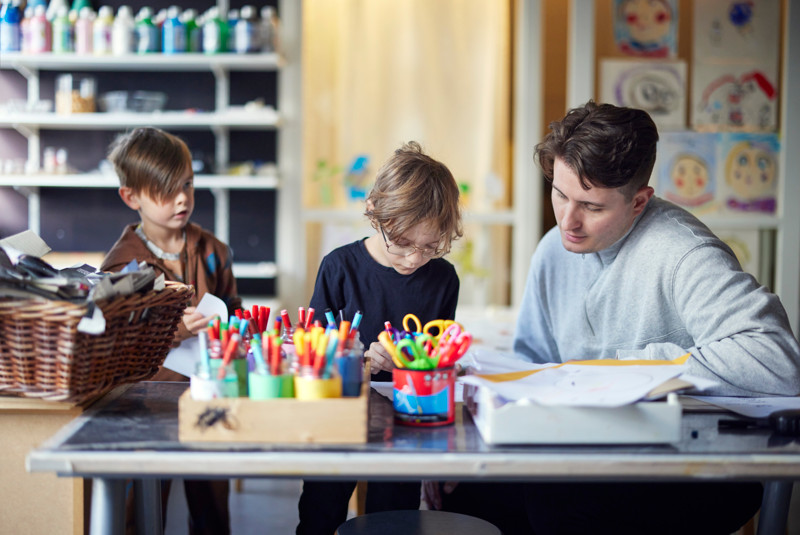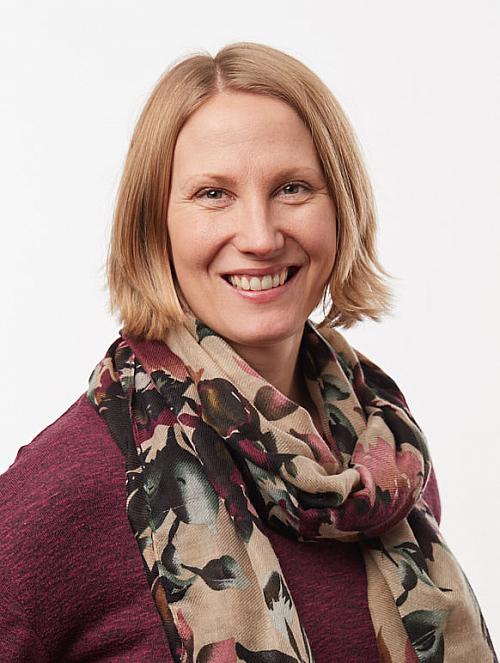What do children and teachers do in preschool?
A new doctoral thesis explores international patterns and Swedish characteristics.
Frida Åström, doctoral student in disability research at the School of Education and Communication, Jönköping University, examines variations in how preschool activities are conducted and practiced, both from an international and a Swedish perspective. The results of the doctoral thesis suggest that practices in preschool vary both between and within countries, and that this variation is related to policies, culture, and values at multiple levels.
.jpg)
Foto: Patrik Svedberg
"The thesis shows that preschool practices vary significantly between preschools in the three participating countries, especially between Swedish preschools following the socio-pedagogical tradition, and American and Portuguese preschools following the early education tradition," says Frida Åström.
In Swedish preschools, free play is prominent, while teacher-led whole groups dominate in Portugal and the USA. Swedish preschool children engage in outdoor activities and interaction in small groups, while children in Portugal and the USA have less interaction and more focus on teacher-led instruction. Differences are also seen in subject orientation, where Portuguese and American children devote more time to literacy and numeracy than Swedish children. Construction play, creative activities, music, and simpler play are more common in Swedish preschools, as well as a broad variation in the tasks of preschool staff. Open-ended questions and listening to children are rare in all three countries.
More research is needed
"Differences in preschool practices between countries highlight different values and goals for preschool in different countries and are relevant to how we perceive quality. In Swedish preschools, we probably need to focus more on interaction among children and the impact of the group, as well as the skills of preschool staff in managing the group, not just their teaching efforts," says Frida Åström.
At the same time, the variation between preschools does not seem to be solely explained by differences at the national level. More local factors seem to play a role, but more research is needed, especially in Sweden. Future studies should examine the relationship between preschool practices and the structural quality of preschool, such as the proportion of preschool teachers, the quality of ownership and leadership among preschool directors, and the socioeconomic status of the preschool area, according to Frida Åström.
"We also need more studies that look at which preschool practices produce the desired effects for children, from a Swedish and socio-pedagogical perspective," she says.
Risk factors for low participation
The doctoral thesis also looked at the participation of Swedish preschool children, meaning being present and engaged when they are at school. It shows, for example, some risk factors for low participation. Children with a mother tongue other than Swedish, and children who attended the same unit as several children with a mother tongue other than Swedish, tended to show low participation in free play. However, children with disabilities or in need of special support did not show lower participation.
"The children who showed the lowest participation in the study seemed invisible to preschool staff. In addition to more children with a mother tongue other than Swedish, we found few characteristics for this group. However, previous studies show that children who do not disturb the activities, but may just be passive, and children with a mother tongue other than Swedish, rarely receive special support from preschool staff. Therefore, as preschool staff, there is a reason to focus a little extra on children with a mother tongue other than Swedish, as well as children who are passive or rarely engaged in play," says Frida Åström.
According to Frida Åström, research on inclusion in preschool should not always start with children with specific characteristics such as disabilities. It may take until school age before diagnoses are established, and there is a risk of missing children with low participation who do not necessarily disturb the activities. By starting from and studying the desired outcome of inclusion, such as participation and everyday functioning, for all children in preschool, we can better approach the inclusive vision of Swedish preschools.
Systematic observations
The study conducted systematic observations using "behavior counts" (based on various behaviors of children and staff) to analyze variations in everyday activities and interactions between children and preschool staff in preschools in Sweden, Portugal, and the USA, with a focus on Swedish preschools. In total, 78 units in Sweden, 42 classrooms in Portugal, and 168 classrooms in the USA were observed. In addition to this, the participation of 453 children in free play in Swedish preschools was observed and analyzed. The observations covered several aspects of the preschool environment, including the organization of teaching, tasks for preschool teachers, the complexity of instruction, the content focus of both children and teachers, interaction, and the degree of child engagement.
Frida Åström defended her doctoral thesis "Everyday life in preschool – Swedish and international approaches" on November 17 . Opponent was Professor Thomas Moser, University of Stavanger. The thesis can be read here.
Facts
The "early education tradition" refers to an educational tradition that focuses on structured teaching and early formal education for young children with a clear school-preparatory purpose. It usually means that adults, such as preschool teachers or educators, take a more active role in directing learning and providing formal instructional activities, often in whole groups.
In the "socio-pedagogical tradition," the focus is on the child's social interaction, holistic development, democratic values, and learning through play. In a socio-pedagogical preschool, the emphasis is often on the child's own interests, cooperation, and exploration rather than formal instruction. Preschool staff often have both an educational and caring role characterized by flexibility and responsiveness to the interests and needs of the children.
Contact
- Lecturer
- School of Health and Welfare
- frida.astrom@ju.se
- +46 36-10 1008

